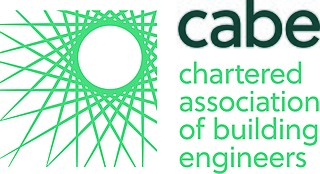Regulation and licensure in engineering is established by various jurisdictions of the world to encourage life, public welfare, safety, well-being, then environment and other interests of the general public and to define the licensure process through which an engineer becomes licensed to practice engineering and to provide professional services and products to the public.
A Bachelor of Engineering, Bachelor of Science in Engineering (BSE), or Bachelor of Science and Engineering is an undergraduate academic degree awarded to a college graduate majoring in an engineering discipline at a higher education institution.

The Architects Registration Board (ARB) is the statutory body for the registration of architects in the United Kingdom. It operates under the Architects Act 1997 as amended, a consolidating Act. It began under the Architects (Registration) Act 1931 which gave it the name the Architects' Registration Council of the United Kingdom (ARCUK). It prescribes architectural qualifications, maintains the Register of Architects, issues a code of professional conduct and competence and imposes sanctions if a finding of unacceptable professional conduct or serious professional incompetence is made against an architect. Its main source of income is fees payable under Part II of the Act by persons on their becoming registered or for their retention on the Register. The board is required to pay into the Consolidated Fund of the United Kingdom any sum paid under a penalty order which its Professional Conduct Committee has made under Part III of the Act. Fines imposed by a magistrates' court under Part IV of the Act are not payable to the board.

The Institution of Engineering and Technology (IET) is a multidisciplinary professional engineering institution. The IET was formed in 2006 from two separate institutions: the Institution of Electrical Engineers (IEE), dating back to 1871, and the Institution of Incorporated Engineers (IIE) dating back to 1884. Its worldwide membership is currently in excess of 158,000 in 153 countries. The IET's main offices are in Savoy Place in London, England, and at Michael Faraday House in Stevenage, England.

Engineering New Zealand Te Ao Rangahau is a not-for-profit professional body that promotes the integrity and interests of members, the profession, and the industry. It seeks to "bring engineering to life" and has more than 22,000 members.
The Sydney Accord is an international mutual recognition agreement for qualifications in the fields of engineering technology.
Certified engineering technologist (CET) is a Canadian professional certification awarded on the basis of academic qualification and work experience. Abbreviated as C.E.T., most Canadian provincial engineering and applied science technology associations offer this certification. Certification is voluntary and does not represent a provincial regulatory requirement or a statutory required license.

Engineering education is the activity of teaching knowledge and principles to the professional practice of engineering. It includes an initial education, and any advanced education and specializations that follow. Engineering education is typically accompanied by additional postgraduate examinations and supervised training as the requirements for a professional engineering license. The length of education, and training to qualify as a basic professional engineer, is typically five years, with 15–20 years for an engineer who takes responsibility for major projects.
A professional technologist (P.Tech) is a class of certification of engineering technologist and professional technologist in Canada and Malaysia respectively.

Chartered Association of Building Engineers (CABE) is a professional body for building engineers in the United Kingdom and overseas.

A building engineer is recognised as being expert in the use of technology for the design, construction, assessment and maintenance of the built environment. Commercial Building Engineers are concerned with the planning, design, construction, operation, renovation, and maintenance of buildings, as well as with their impacts on the surrounding environment.
In the United Kingdom, a Chartered Engineer (CEng) is an engineer registered with the UK's regulatory body for the engineering profession, the Engineering Council. Chartered Engineers are master's degree qualified or must demonstrate equivalent masters level, work-based learning. The appropriate professional competencies must be demonstrated through education, further training and work experience. Significant experience is required which invariably spans several years of postgraduate professional practice. Demonstration of competence is defined in the UK Standard for Professional Engineering Competence, assessed through professional review of academic qualifications and professional development. Formal, non-formal and informal learning can be assessed. The title Chartered Engineer is protected in the UK under law by means of the Engineering Council’s Royal Charter and Bye-laws. As of 2019 there are approximately 180,000 engineers registered as a Chartered Engineer. Chartered Engineers are registered through Professional Engineering Institutions (PEIs) licensed by the Engineering Council which are relevant to their industry or specialism. The total process of formation of a Chartered Engineer including MEng typically spans at least 8-10 years, although 12+ years is not uncommon to satisfy all of the competency requirements.
An urban planner is a professional who practices in the field of town planning, urban planning or city planning.

Engineers Australia (EA), known formally as the Institution of Engineers, Australia, is an Australian professional body and not-for-profit organisation whose purpose is to advance the science and practice of engineering for the benefit of the community. Engineers Australia is Australia's recognized organization for accreditation of professional engineering qualifications under the Washington Accord. As of 2022, EA has 115,000 members, which includes 31,000 students.
The Engineering Council of South Africa (ECSA) is the statutory body for engineering profession in South Africa. Its functions are to accredit the engineering programs and to register the engineering professionals in specified categories throughout the country.
In the United Kingdom, the Architects Act 1997 imposes restrictions on the use of the name, style or title "architect" in connection with a business or a professional practice, and for that purpose requires a statutory Register of Architects to be maintained. The Architects Registration Board constituted under the Act is responsible for Architects Registration in the United Kingdom and is required to publish the current version of the Register annually. Every person who is entitled to be registered under the Act has the right to be entered in the register. The act consolidated previous enactments originating with the Architects (Registration) Act 1931 as amended by the Architects Registration Act 1938. It applies to England, Wales, Scotland and Northern Ireland.
Professional requirements for architects vary from place to place, but usually consist of three elements: a university degree or advanced education, a period of internship or training in an office, and examination for registration with a jurisdiction.
Higher education accreditation is a type of quality assurance process under which services and operations of post-secondary educational institutions or programs are evaluated to determine if applicable standards are met. If standards are met, accredited status is granted by the agency.

The Institution of Engineers, Bangladesh, commonly referred to as IEB, is the national professional organisation of engineers in Bangladesh. It is registered under the Societies Registration Act (1860) of the country. Within the country, it has 18 centers and 31 sub-centers. It has 10 'overseas chapter' in different countries of the world, namely: Australia, Kuwait, Malaysia, Oman, Qatar, Saudi Arabia, Singapore, Thailand, United Arab Emirates and the United States. It formed the Board of Accreditation for Engineering and Technical Education (BAETE) which holds the accreditation of engineering faculties in Bangladesh.








